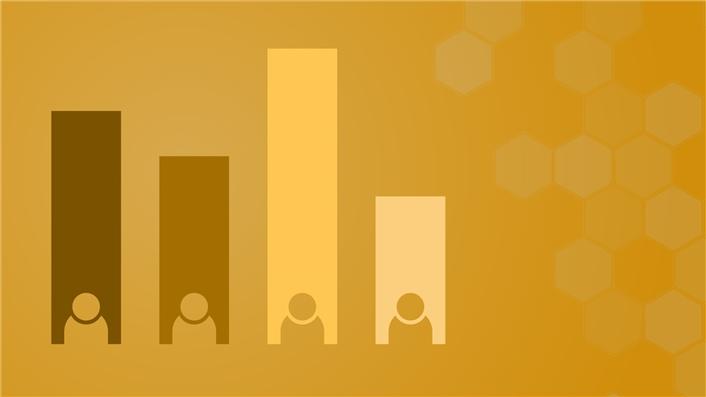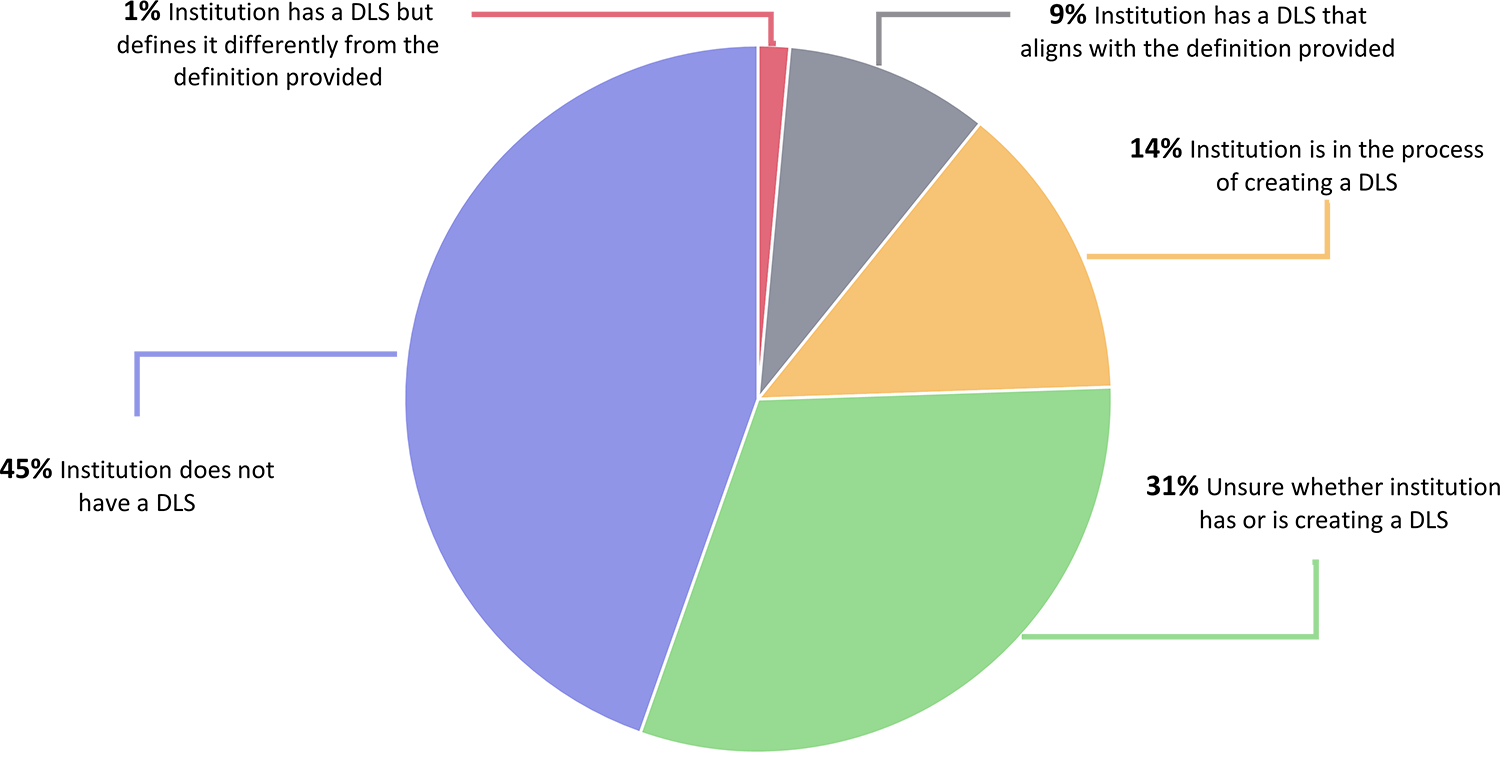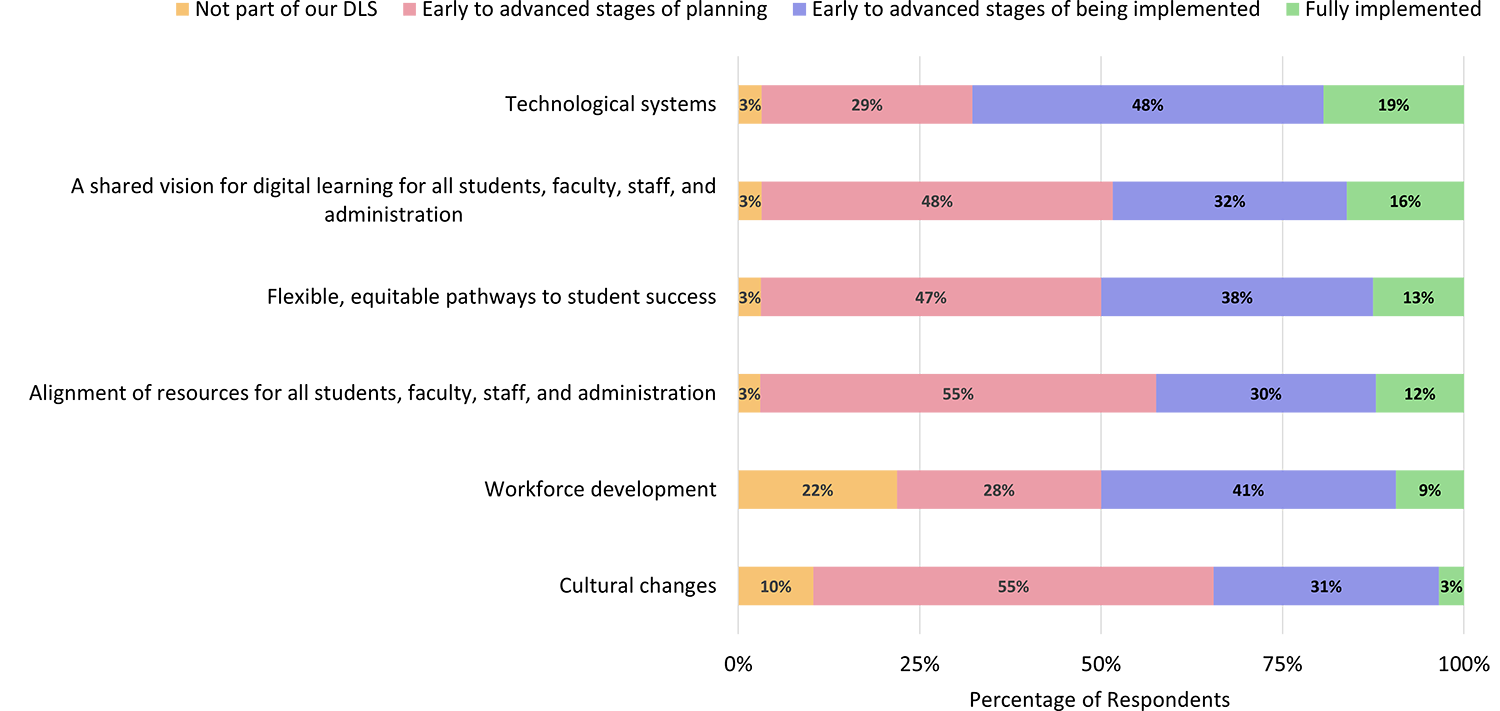As institutions navigate digital transformation, a defined plan can identify areas that should be targeted to achieve desired teaching and learning outcomes. The development and implementation of a comprehensive digital learning strategy (DLS) will be essential to transforming the teaching and learning experience.

EDUCAUSE is helping institutional leaders, technology professionals, and other staff address their pressing challenges by gathering and sharing data. This report is based on an EDUCAUSE QuickPoll. QuickPolls enable us to rapidly gather, analyze, and share input from our community about specific emerging topics.Footnote1
The Challenge
With institutions adopting a broad and ever-changing range of services, tools, and curricular models to support digital learning initiatives, the need for thoughtful digital learning strategy (DLS) planning to transform the overall teaching and learning experience is increasingly apparent. But how widespread is the adoption and implementation of a DLS higher education? And what key areas are institutions targeting within their DLS frameworks?
The Bottom Line
Most respondents indicated that either their institution does not currently have a DLS or they do not know whether their institution has a DLS or is creating one. Among those who did say that their institution has a DLS, a majority indicated that it was not yet fully implemented across a number of dimensions. As more institutions develop their DLS plans in the future, effective collaboration with key staff and community partners will be critical for success, as will alignment with the institution's overall mission and digital transformation strategy.
Defining DLS
For the purposes of this QuickPoll, we provided respondents with the following definition: A digital learning strategy (DLS) is "a defined plan of technological systems, workforce development, and cultural changes that enable the institution's digital learning initiatives. As a component of the institution's digital transformation, the DLS transforms learning by ensuring flexible, equitable pathways to student success. It furthers the institutional mission by aligning resources and providing a shared vision for digital learning at the institution for all students, faculty, staff, and administration."
The Data: Digital Learning Strategies
DLSs are neither ubiquitous nor highly visible. Most respondents indicated that their institution does not currently have a DLS (45%) or that they do not know whether their institution has a DLS or is creating one (31%) (see figure 1). A smaller percentage of respondents indicated that their institution does have a DLS (10%) or that their institution is in the process of creating one (14%). Respondents may not be aware of their institution's current DLS status because it is in early stages of planning/implementation, or perhaps because some institutions have not yet made their DLS highly visible to certain units or stakeholders.

Some institutions are planning and implementing DLSs. The 24% of respondents who indicated that their institution has or is currently creating a DLS were asked to indicate whether their DLS focuses on six key strategic areas. Less than 20% of these respondents indicated that their institution had fully implemented any of these focus areas as part of their DLS (see figure 2). Technological systems was the area most likely to be reported as fully implemented (19%), while workforce development was the area most likely to be reported as not being a part of their DLS (22%). Across the six focus areas, most respondents indicated that their institution is in the early to advanced stages of either planning or implementation.

Current DLS initiatives focus on transformation and support. In their open-ended comments, respondents provided examples of initiatives that their institution's DLS is currently putting into practice. Many of these focused on the work of transforming foundational elements of teaching and learning to an online/digital format:
- "[Instituting] one version of an online course across varying campuses, with the required virtual support in areas such as registration, IT, library, tutorials, assessment"
- "Online learning, blended learning, adaptive learning, learning analytics, multi-modal support services (advising, counseling, tutoring, writing center, etc.)"
- "Transitioning all possible testing/instruction to an online format"
- "HyFlex learning, online proctoring, academic integrity, digital badging, OER"
Future DLS planning focuses on broader issues. Respondents provided examples of initiatives that are being planned, though not yet implemented, as part of their institution's DLS. These longer-term plans focus on broader issues including digital transformation, framework and assessment development, institutional culture, and staff and workforce issues.
- "Digital transformation taskforce, work-based learning, and integration of workforce and academics as a 'one door' for student services"
- "We are currently working on more seamless communications between workforce and credit sides of the house. We are also moving toward utilization of cloud storage and collaboration tools. Management is being redefined to remove silos between learning groups."
- "Developing common framework, vocabulary, governance process updates, new norms."
- "We will be creating a rubric, development plan, and assessment process for adoption and integration of tools."
- "[Cultivating] DEI and using the platforms we have to better develop the support staff."
The Data: Transforming and Streamlining Teaching and Learning
Students could use more personalized support opportunities. Those respondents who indicated that their institution has or is currently creating a DLS were asked to indicate whether the DLS is focused on six key strategies for transforming the teaching and learning experience. Large majorities reported that their institution's DLS does (or will) evaluate the impact of technology on learning (76%); enhance recruitment, retention, and enrollment processes (74%); or help faculty to make courses fully accessible (74%) (see figure 3). Fewer—approximately half—reported that their DLS does (or will) create personalized learning paths (53%) or integrate student support with multiple touch points using data across offices (50%). Only a third of respondents indicated that their DLS is or would be offering opportunities for faculty to engage with students outside class (32%).

Analytics, resources, and automation all matter. Those respondents who indicated that their institutions have or are currently creating a DLS were also asked to indicate whether the DLS is focused on three key strategies for streamlining teaching and learning processes. About two-thirds indicated that their institution's DLS has strategies to automate teaching processes (64%), and roughly three-quarters indicated that their institution's DLS has strategies to support the changing needs of students, faculty, and staff (73%) or to use learning analytics to inform decision making (79%) (see figure 4).

Educational offerings are being transformed but are not globally minded. Finally, those respondents who indicated that their institutions have or are currently creating a DLS were asked to indicate whether the DLS focuses on three key strategies for transforming educational offerings. The vast majority of respondents indicated that their institution's DLS has strategies to enhance learning via technology and course modalities (91%) or to develop new teaching and learning opportunities (88%) (see figure 5). However, strategies aimed to equip globally minded faculty and staff were less common (44%).

The Data: DLS Engagement and Support From Stakeholders
A DLS is about more than just students and faculty. Asked about the importance of support from different stakeholders for their institution's DLS, an overwhelming majority of respondents indicated that engagement and buy-in from students and faculty is included as an important part of their institution's DLS (94% and 91%, respectively), with leadership and administration close behind (85%) (see figure 6). Engagement and buy-in from staff and community partners were less likely to be specified in the DLS (68% and 38%, respectively). When looking more closely at specific types of staff roles, staff related directly to teaching and learning and technology support were more likely to be identified as important for the institution's DLS (see figure 7).


Common Challenges
Colleges and universities must make DLS adoption the new norm. Most respondents indicated that their institution does not currently have a DLS or that they did not know if there was one (76%). Thus, one of the most immediate challenges for institutions will be raising awareness of what a DLS is and engaging leaders and stakeholders in conversation about the potential benefit of developing an institutional DLS. Understanding where DLS adoption aligns to the institution's strategic plan, digital transformation strategy, and teaching and learning goals will further aid in the process of navigating these challenges.
DLS efforts need to focus on the big picture. Digital learning is much more than the adoption of technology and equipment to support learning. Leadership, faculty, and staff should carefully consider the complex set of factors that will impact digital learning and the overall teaching and learning experience to ensure it is personalized, meets the needs of all stakeholders, and contributes to the institution's overall shared vision and culture. Colleges and universities will need to consider that their strategic plan and teaching and learning goals may call for a DLS. A sampling of open-ended comments suggests that institutions currently planning a DLS are already taking this approach, as respondents reported implementing broader initiatives beyond current DLS strategic focus areas.
Promising Practices
Develop a plan that goes beyond the technological systems. A DLS should identify strategies that go beyond just technology and digital accessibility. As part of their DLS, institutions should consider strategies that also target the institution's culture and workforce. Cultural strategies should focus on effective cross-unit communication and collaboration, improved and more systematic data-informed decision-making capabilities, and staff understanding of and alignment to the institution's vision, mission, and values. Workforce strategies should focus on equipping faculty and staff with the skills and competencies needed for new modalities of teaching and working and on developing globally minded faculty and staff.
Align with digital transformation. A DLS is just one part of the institution's larger digital transformation (Dx) strategy. If institutions have not already started planning and implementing a more comprehensive Dx strategy, it will be important for them to do so as they begin to grapple with the development of a DLS. Visit the EDUCAUSE Dx Journey Roadmap for more information and resources for charting out your institution's Dx journey.
All QuickPoll results can be found on the EDUCAUSE QuickPolls web page. For more information and analysis about higher education IT research and data, please visit the EDUCAUSE Review EDUCAUSE Research Notes topic channel, as well as the EDUCAUSE Research web page.
Notes
- QuickPolls are less formal than EDUCAUSE survey research. They gather data in a single day or two, instead of over several weeks, and allow timely reporting of current issues. This poll was conducted on August 15–16, 2022, consisted of 14 questions, and resulted in 139 complete responses. Poll invitations were sent to participants through the EDUCAUSE Connect platform to groups focused on teaching and learning, digital transformation, and strategic planning; we are not able to associate responses with specific institutions. Our sample represents a range of institution types and FTE sizes, and most respondents (92%) represented U.S. institutions.Jump back to footnote 1 in the text.
Nicole Muscanell is Researcher at EDUCAUSE.
© 2022 Nicole Muscanell. The text of this work is licensed under a Creative Commons BY-NC-ND 4.0 International License.
